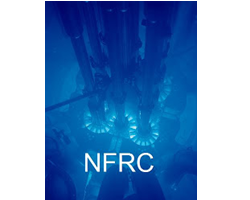
 











|
Signature Sponsor


By Clinton E. Crackel, Co-Founder and Co-Chairman, Nuclear Fuels Reprocessing Coalition
March 15, 2018 - Over the past several months, I have been proposing the use of the Fischer-Tropsch (F-T) coal to liquid (CTL) synthetic fuel process as a viable alternative to refined crude oil. Yet, even though burning fossil fuels release undesirable pollutants to the environment, especially carbon dioxide (CO2), there have been dramatic improvements in technologies that can significantly restrict or possibly even eliminate the release of CO2 and other pollutants to the environment.
In my January 1, 2018 article published on CoalZoom.com, “Coal is a Viable Source of Rare-Earth Elements”, I discussed the prospect of extracting rare earths and heavy metals from coal. On June 9, 2017, the Department of Energy announced the awarding of up to $6.9 million for research into extracting rare earth elements from coal and coal by-products, including fly ash slurry.
If coal is not used as the fuel for producing the heat needed in the F-T CTL synthetic fuel process, fly ash slurry accumulation shouldn’t be a problem. That is why I suggested the use of a small modular reactor (SMR) for providing the heat in my October 6, 2017 article published in CoalZoom.com, “Coal Can Eliminate Our Need for Foreign Oil”.
Unfortunately, the first three SMR reactor types that could possibly be used in this process are still in various pre-licensing phases with the U.S. Nuclear Regulatory Commission. Therefore, a different type of fuel other than coal or electricity should be used for generating the heat needed in the F-T CTL synthetic fuel process. Coal should be reserved strictly for the process feed stock.
Granted, the use of electricity for powering high-temperature industrial process heaters, along with all the other electric-driven plant components, could be very costly if purchased from the electric grid. However, in addition to producing the various synthetic fuel products, one or more steam generators can be incorporated for providing steam to turn turbine generators to generate ac electricity to be used for satisfying plant operations’ electric supply needs and to sell on the grid.
When it comes to reducing or eliminating atmospheric emissions of such gases as CO2, carbon sequestration technology for carbon capture and storage (CCS) is available to collect stack emissions for transfer to deep well storage. Although CCS has been emphasized for use in coal-fired electric generation plants, it can also be used in the F-T CTL synthetic fuel process.
I propose the process gases be collected from the various points where emission to the atmosphere would occur, be diverted through a particulate filtration system, then to carbonate capture fuel cells that would transfer the filtered gas to a series of underground storage tanks where the CO2 can be stored under pressure until each storage tank has met its storage capacity. The pressurized CO2 would then be transferred for processing to be converted to methanol.
Although the fuel cells generate dc electricity, the dc electricity can be directly accepted by the ac electric supply system without the need to synchronize the output electric current. An electric current in the 135vdc range, is normally used by instrumentation and control systems that are reliant on battery backup, including ac generator stator excitation. Also, a sufficient number of fuel cells on a large capacity F-T CTL synthetic fuel plant might be able to generate upwards to 100 MW of additional power or more for on-site use and/or for sale on the grid.
There are at least two ways to convert CO2 into methanol. One is through the use of a catalyst comprised of copper and zinc. Another type is a photosynthetic process using special solar cells. Regardless of which conversion technology is used, the methanol can be added to the processed gasoline supply.
Since the F-T CTL synthetic fuel process relies on the use of a lot of water, instead of drawing water from wells or surface water sources, I propose building a water reclamation facility on or near the process plant site to convert municipal wastewater purchased from local communities into demineralized water for use in process systems using water. Demineralized water is the most desirable water to be used in water fluidized process systems because of its corrosion inhibition properties.
Clinton Crackel
CoalZoom.com - Your Foremost Source for Coal News |
 







|
 (1).png)